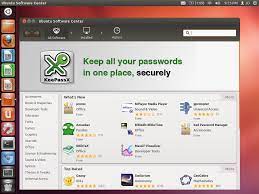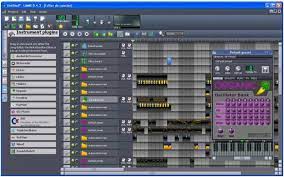Exploring the Power and Versatility of Linux Software: Unleashing the Potential of Open-Source Solutions
Linux Software: Empowering Users with Open-Source Solutions
In the world of technology, software plays a crucial role in shaping our digital experiences. From productivity tools to multimedia applications, software enables us to accomplish tasks efficiently and enjoyably. When it comes to operating systems, Linux has emerged as a powerful contender, offering a plethora of open-source software that empowers users and fosters innovation.
Linux is an open-source operating system that provides users with the freedom to customize and modify their computing environment according to their needs. Unlike proprietary systems, Linux allows users to access and modify the source code of the software they use. This unique characteristic has given rise to a vibrant ecosystem of developers, enthusiasts, and communities collaborating to create high-quality software for various purposes.
One of the key advantages of Linux software is its versatility. Whether you are a student, professional, or hobbyist, there is an extensive range of Linux applications available for every need. Need an office suite for your productivity tasks? LibreOffice provides a comprehensive suite that includes word processing, spreadsheets, presentations, and more. Looking for photo editing tools? GIMP (GNU Image Manipulation Program) offers powerful features comparable to industry-standard applications. Want to explore music production? Ardour allows you to compose and record music with professional-grade tools.
The availability of open-source software on Linux extends beyond basic applications. Developers have created robust development environments like Eclipse and Visual Studio Code that support multiple programming languages and facilitate efficient coding workflows. Content creators can take advantage of video editing software such as Kdenlive or Blender for 3D animation projects. Gamers can enjoy a growing library of games available through platforms like Steam or utilize emulators for retro gaming experiences.
Another remarkable aspect of Linux software is its commitment to security and privacy. With the ability to review source code openly, potential vulnerabilities are quickly identified and addressed by the community. Updates are released regularly, ensuring that users have access to the latest security patches. Additionally, Linux distributions often include built-in encryption tools, firewalls, and other security features to protect user data.
Linux software is not limited to desktop or laptop computers. The open-source nature of Linux has led to its adoption in a wide range of devices, including servers, embedded systems, smartphones, and even smart home devices. This flexibility allows users to enjoy a consistent experience across multiple platforms and leverage the vast array of software available.
As with any technology, there may be a learning curve when transitioning to Linux software. However, numerous resources are available online, including comprehensive documentation and active user communities ready to provide support and guidance. The open-source philosophy encourages collaboration and knowledge sharing, making it easier for newcomers to get started.
In conclusion, Linux software offers a compelling alternative for users seeking freedom, versatility, and security in their computing experience. With its vast selection of open-source applications spanning various domains and its commitment to privacy and innovation, Linux empowers users to take control of their digital environment. Whether you are an individual seeking customization or an organization looking for reliable solutions without licensing costs, Linux software provides a robust foundation for your computing needs.
Embrace the power of open-source software on Linux and unlock new possibilities for productivity, creativity, and exploration in the digital realm.
Common Queries About Linux Software in English (UK)
- What is Linux app used for?
- Which software is used for Linux?
- Is Linux a free software?
- What is Linux system software?
What is Linux app used for?
Linux apps are used for a wide range of purposes, catering to the diverse needs of users. Here are some common uses of Linux apps:
- Productivity: Linux offers a variety of productivity applications such as office suites (e.g., LibreOffice), note-taking tools (e.g., Simplenote), project management software (e.g., Redmine), and collaboration platforms (e.g., Nextcloud). These apps help users create documents, manage tasks, collaborate with others, and stay organized.
- Development: Linux is highly regarded among developers due to its robust development environment. It provides a plethora of programming tools, integrated development environments (IDEs), compilers, and libraries for various programming languages. Popular examples include Eclipse, Visual Studio Code, GCC (GNU Compiler Collection), and Git.
- Multimedia: Linux offers a range of multimedia applications for creating and editing audio, video, and graphics content. Software like Ardour (audio editing), Kdenlive (video editing), GIMP (image editing), and Inkscape (vector graphics) provide powerful tools for content creators.
- Internet Browsing and Communication: Linux provides web browsers like Mozilla Firefox, Google Chrome/Chromium, and Opera that allow users to browse the internet securely. Additionally, communication apps like Thunderbird (email client) and Pidgin (instant messaging) enable users to stay connected.
- System Administration: Linux is widely used as an operating system for servers due to its stability and security features. System administration tools like SSH clients (e.g., OpenSSH), network monitoring software (e.g., Nagios), and configuration management systems (e.g., Ansible) are essential in managing servers efficiently.
- Gaming: While traditionally considered more limited in terms of gaming options compared to other platforms, Linux has gained traction in gaming with the availability of Steam for Linux and various open-source games. Additionally, compatibility layers like Wine and Proton allow some Windows games to run on Linux.
- Education: Linux is frequently used in educational settings due to its open-source nature and availability of educational software. Applications like GCompris (educational activities for children), Stellarium (astronomy simulation), and Moodle (learning management system) support learning and teaching processes.
- Security and Privacy: Linux is known for its strong security features, making it a popular choice for users concerned about privacy. Software such as firewall tools (e.g., iptables), encryption utilities (e.g., GnuPG), and virtual private network (VPN) clients provide enhanced security and privacy options.
These are just a few examples of the many purposes Linux apps serve. The open-source nature of Linux encourages continuous development, ensuring a vast selection of software for various needs. Whether it’s personal computing, professional work, or specialized applications, Linux offers a versatile platform with an extensive range of apps to cater to diverse user requirements.
Which software is used for Linux?
Linux is an operating system that supports a wide range of software applications. Some popular software used on Linux includes:
- Office Productivity: LibreOffice, Apache OpenOffice, OnlyOffice, and WPS Office.
- Web Browsers: Mozilla Firefox, Google Chrome, Chromium, and Opera.
- Email Clients: Mozilla Thunderbird, Evolution, and KMail.
- Multimedia Players: VLC Media Player, GNOME Videos (formerly Totem), Audacious, and Rhythmbox.
- Image Editing: GIMP (GNU Image Manipulation Program), Inkscape (vector graphics editor), and Shotwell (photo manager).
- Video Editing: Kdenlive, OpenShot Video Editor, and Shotcut.
- Audio Editing: Ardour (digital audio workstation), Audacity (audio editor), and JACK Audio Connection Kit.
- Programming Environments: Visual Studio Code, Eclipse IDE, Atom Editor, and PyCharm.
- Virtualization Software: VirtualBox and KVM (Kernel-based Virtual Machine).
- Gaming Platforms: Steam for Linux and Lutris for managing various gaming platforms.
These are just a few examples of the software available for Linux. The open-source nature of Linux encourages developers to create a vast array of applications across various domains to cater to different user needs. Additionally, many proprietary software companies also provide versions of their applications specifically designed for Linux users.
Is Linux a free software?
Yes, Linux is often referred to as free software. However, it’s important to clarify the meaning of “free” in this context. Linux is free in terms of freedom, not necessarily in terms of cost.
When we say Linux is free, we mean that it is released under an open-source license, such as the GNU General Public License (GPL). This license grants users the freedom to study, modify, distribute, and redistribute the software. Users have the ability to access and modify the source code according to their needs or preferences.
The open-source nature of Linux encourages collaboration and fosters innovation. It allows individuals and communities to contribute improvements and fixes back to the software, benefiting the entire user base.
However, it’s worth noting that while Linux itself is typically free in terms of cost, there may be costs associated with specific distributions or additional software packages. Some organizations offer commercial support or enterprise versions of Linux distributions that come with additional features or services for a fee. Additionally, while many open-source applications are available for free on Linux, some proprietary software may require a license or payment.
In summary, Linux is considered free software because it provides users with the freedom to use, modify, and distribute it. This freedom promotes collaboration and empowers users to customize their computing experience.
What is Linux system software?
Linux system software refers to the core components and programs that make up the Linux operating system. It encompasses the essential software required to manage hardware resources, provide user interfaces, and facilitate the execution of applications on a Linux-based computer.
At its core, Linux is a kernel, which acts as the bridge between hardware and software. The kernel manages system resources such as memory, CPU, input/output devices, and provides essential services for other software components to run efficiently. It handles tasks such as process management, device drivers, memory management, file system access, and network communication.
In addition to the kernel, Linux system software includes various utilities and libraries that work together to provide a complete operating environment. These utilities include command-line tools for managing files and directories (such as ls, cp, mv), text editors (such as vi or nano), networking tools (such as ping or ifconfig), package managers (such as apt or yum), and more. These utilities allow users to interact with the operating system efficiently.
Linux also provides graphical user interfaces (GUIs) that enable users to interact with their computers using windows, icons, menus, and pointers (WIMP). Popular Linux desktop environments include GNOME, KDE Plasma, XFCE, and Cinnamon. These desktop environments provide a visually appealing interface along with additional applications like file managers, web browsers, email clients, office suites, media players, and more.
Furthermore, Linux system software includes libraries that provide developers with pre-written code for common tasks. These libraries simplify application development by providing functions for tasks such as graphics rendering (e.g., OpenGL), network communication (e.g., OpenSSL), database access (e.g., MySQL connector), multimedia processing (e.g., FFmpeg), and many others. By leveraging these libraries in their applications or projects, developers can save time and effort in coding from scratch.
One of the strengths of Linux is its modular nature. Users have the freedom to choose and install specific software components according to their needs. This flexibility allows users to create a tailored system that suits their requirements, whether it’s a lightweight server setup or a feature-rich desktop environment.
In summary, Linux system software encompasses the kernel, utilities, libraries, and graphical interfaces that form the foundation of the Linux operating system. It provides the necessary tools and resources for managing hardware, executing applications, and interacting with the computer. With its modular design and open-source nature, Linux offers users a powerful and customizable platform for various computing needs.




